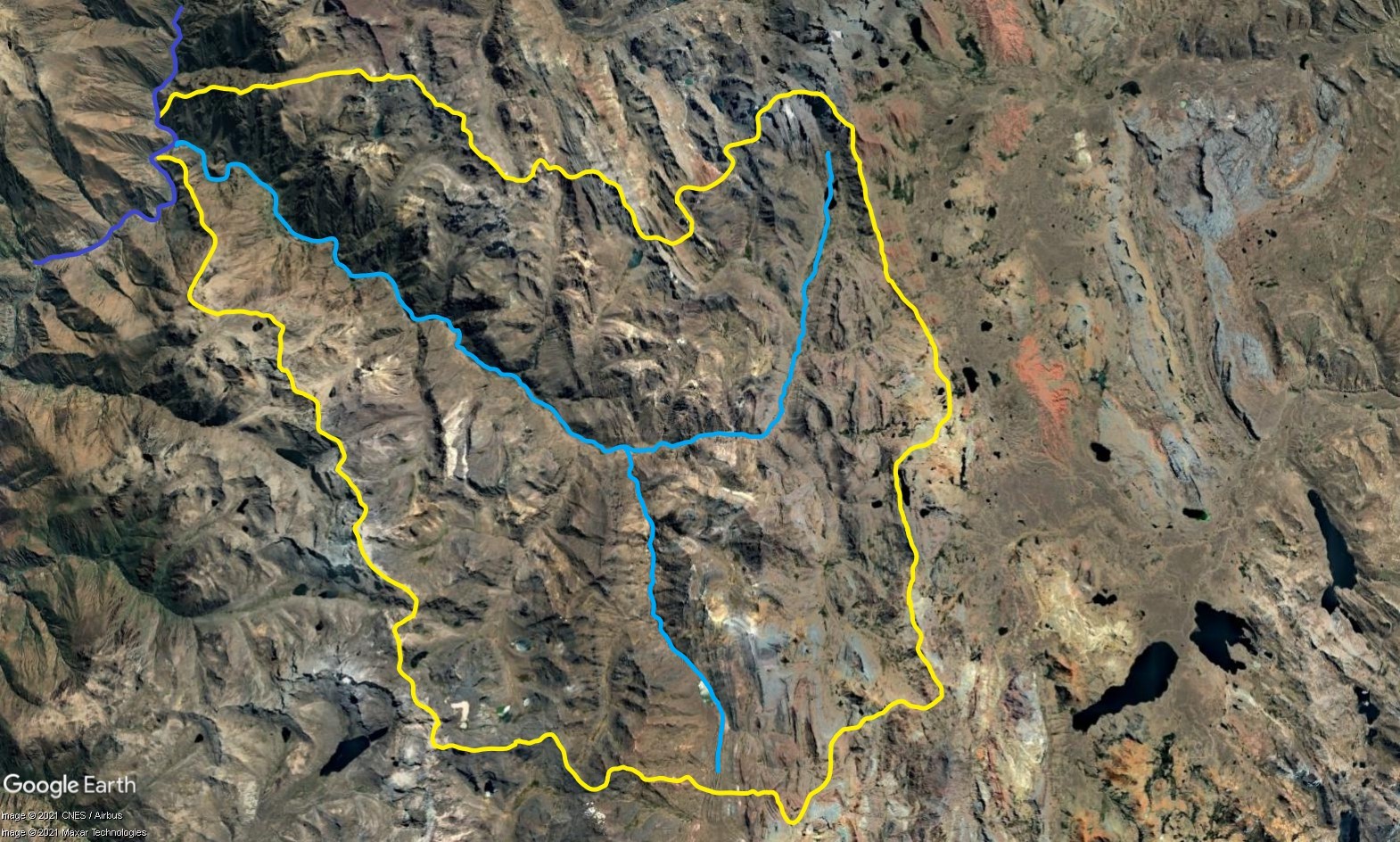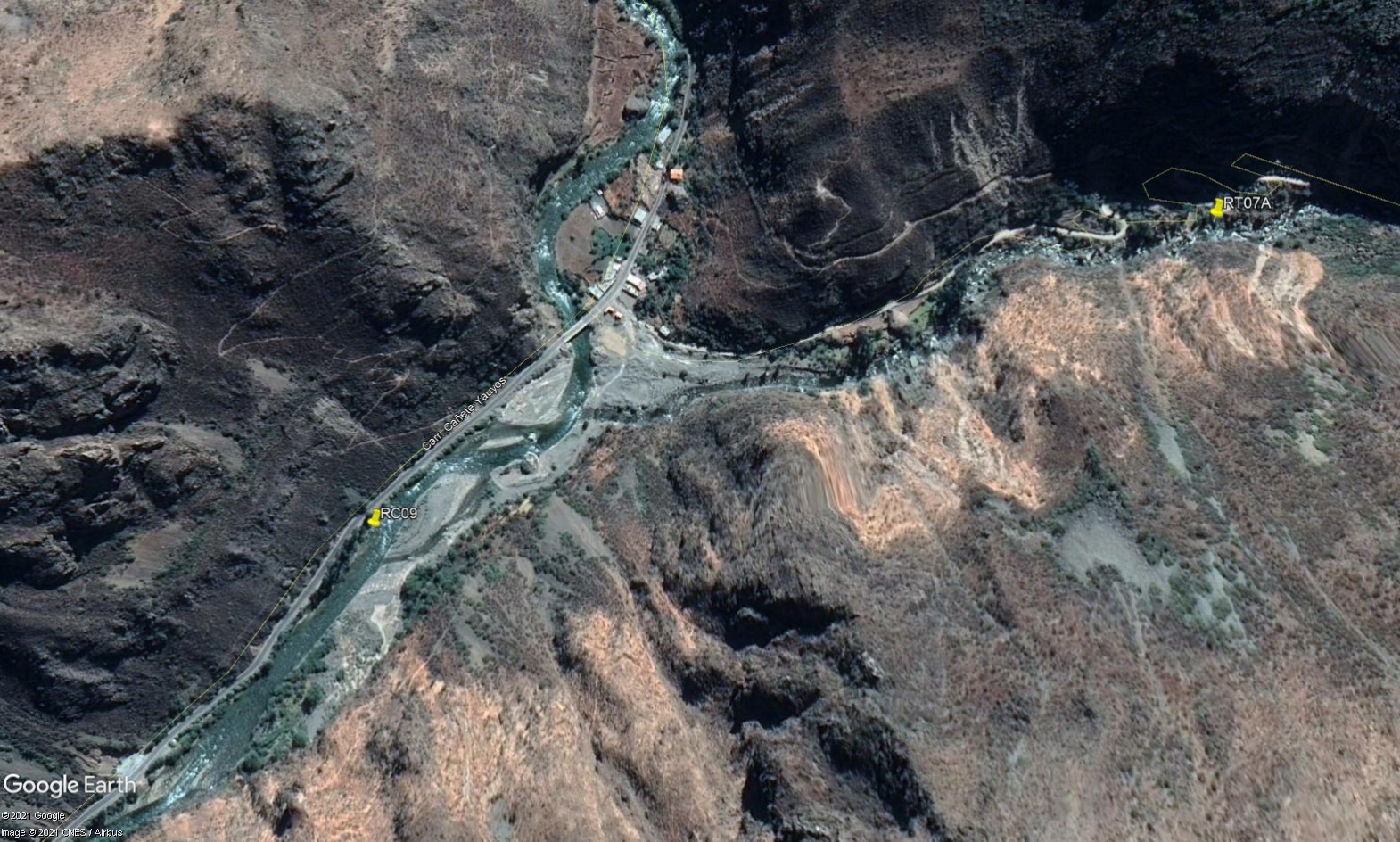RT07A - Lower Huantan
Site Code: RT07A. GPS: S12°42603, W75°848726. Elevation: 2679m asl.
Water Quality Data
The following river and water quality data was collected from this site:
| RT07A | July 2019 | November 2019 | November 2021 | July 2022 |
|---|---|---|---|---|
| Season: | Austral Winter | Austral Summer | Austral Summer | Austral Winter |
| Date: | 11.07.2019 | 20.11.2019 | 14.11.2021 | 4.7.22 |
| Time: | 11.00 | 15.35 | 15.00 | 13.30 |
| Width (m) | 2.0 | 4.0 | 12.0 | 13.4 |
| Depth (Av.) (m) | 0.26 | 0.19 | 0.27 | 0.32 |
| CSA (Av.) (m²) | 0.51 | 0.75 | 3.23 | 4.288 |
| Velocity (Av.) (m/s) | 0.60 | 0.56 | 0.32 | 0.56 |
| Discharge (Av.) (m³/s) | 0.308 | 0.424 | 1.023 | 2.403 |
| Riverbed sediment | Mainly boulders | Mainly boulders | Mainly boulders | Mainly boulders |
| Temp. (Atmospheric) (°C) | 17 | 18 | 22 | 19 |
| Temp. (Water) (°C) | 8.30 | 12.97 | 16.32 | 11.28 |
| Atmospheric pressure (mbar) | 725 | 745 | 656 | |
| Dissolved oxygen (mg/l) | 6.04 | 4.69 | 6.21 | 8.07 |
| Dissolved oxygen (%) | 69.3 | 73.7 | 85.7 | 113.6 |
| pH | 8.56 | 8.33 | 8.31 | |
| Conductivity (µS/cm) | 180 | 173 | 289 | 177 |
| Total Dissolved Solids (ppm) | 90 | 86 | 145 | 89 |
| ORP (mV) | 354.1 | 145.5 | 91.6 | 98.8 |
| Turbidity | Clear: | Clear: | Clear: | Clear: slightly green |
| Alkalinity (mg/l CaCO₃) | - | - | 102 (1.6N) | 93 (1.6N) |
| Alkalinity Tester (ppm CaCO₃) | - | - | - | 77 |
Data Analysis
Discharge at this point on the Rio Huantan varies according to the weather conditions in the high sierra, 30-40kms upriver. The July 2022 discharge, unlike the July 2019 discharge still reflects the seasonal rainfall earlier in the year while the November 2021 dischrage reflects the early onset of the rains in the headwaters of this sub-catchment that year.
At just over 2400m asl the DO readings at RT07A fall within the range to be expected for both July and November data sets. Again, the increased elevation and diurnal fluctuations in temperature in narrow, sheltered sections of the valley will produce fluctuations in maximum absolute oxygen capacity and, consequently, the percentage saturation. This then fluctuates with that rhythm accordingly.
The conductivity readings at this site (173-289 µS/cm) are as expected for a sub-catchment at this elevation.
Average pH readings approaching 8.5 are as expected. At these levels the alkalinity of the river is highly suitable for aquatic life and indicative of clean water.
Site Description
Site RT07A lies in the Rio Huantan valley at 2572m asl and just above the confluence with the Rio Cañete. It is located in the upper sub-tropics, above the settlement of Tinco in a picturesque valley. The valley at this point is very narrow with a pronounced v-shaped profile and steep river cliffs cut down through highly fractured strata. Bed load in the river channel is comprised of rocks predominantly with huge boulders. River flow in the Rio Huantan is year-round and delivers a not insignificant proportion of river discharge at this point in the catchment.
There is little or no agricultural cultivation along this section of the Rio Huantan. The study site is dominated by riparian Alders, Agaves, and tall thorn scrub. Above the narrow flood plain valley sides are arid, supporting a xeric vegetation with increased woody shrubs and trees lining some of the more sheltered ravines. The lack of agricultural activity results from the lack of level ground and dominance of rocks and boulders lying across the steep slopes. This site retains the typical avifauna of the lower elevations with Scrub Blackbird, Black-necked Woodpecker, Golden Grosbeak, Chiguanco Thrush, House Wren, and Hooded Siskin being species that reflect a transitional community between the sub-tropics and temperature zone.
In the middle valley, well above the study site, the village of Huantan has retained much of its population due to extensive hillside terracing and a thriving dairy industry. This may make a small negative contribution to the water quality of the river which runs through the centre of the village.
 Tributary 07 - the Huantan subcatchment. (Eustace Barnes)
Tributary 07 - the Huantan subcatchment. (Eustace Barnes)
 Site RT07A - the study site location just above the Huantan turn off at Tingo. (John Forrest)
Site RT07A - the study site location just above the Huantan turn off at Tingo. (John Forrest)
Site RT07A - the study site. (July 2019) (John Forrest)
Site RT07A - View downstream from the study site. (July 2019) (John Forrest)
Site RT07A - View upstream from the study site. (July 2019) (John Forrest)
